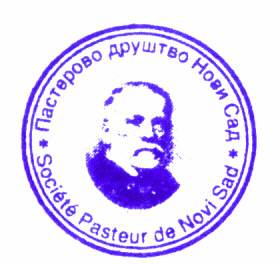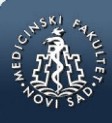md-medicaldata
Main menu:
- Naslovna/Home
- Arhiva/Archive
- Godina 2024, Broj 1
- Godina 2023, Broj 3
- Godina 2023, Broj 1-2
- Godina 2022, Broj 3
- Godina 2022, Broj 1-2
- Godina 2021, Broj 3-4
- Godina 2021, Broj 2
- Godina 2021, Broj 1
- Godina 2020, Broj 4
- Godina 2020, Broj 3
- Godina 2020, Broj 2
- Godina 2020, Broj 1
- Godina 2019, Broj 3
- Godina 2019, Broj 2
- Godina 2019, Broj 1
- Godina 2018, Broj 4
- Godina 2018, Broj 3
- Godina 2018, Broj 2
- Godina 2018, Broj 1
- Godina 2017, Broj 4
- Godina 2017, Broj 3
- Godina 2017, Broj 2
- Godina 2017, Broj 1
- Godina 2016, Broj 4
- Godina 2016, Broj 3
- Godina 2016, Broj 2
- Godina 2016, Broj 1
- Godina 2015, Broj 4
- Godina 2015, Broj 3
- Godina 2015, Broj 2
- Godina 2015, Broj 1
- Godina 2014, Broj 4
- Godina 2014, Broj 3
- Godina 2014, Broj 2
- Godina 2014, Broj 1
- Godina 2013, Broj 4
- Godina 2013, Broj 3
- Godina 2013, Broj 2
- Godina 2013, Broj 1
- Godina 2012, Broj 4
- Godina 2012, Broj 3
- Godina 2012, Broj 2
- Godina 2012, Broj 1
- Godina 2011, Broj 4
- Godina 2011, Broj 3
- Godina 2011, Broj 2
- Godina 2011, Broj 1
- Godina 2010, Broj 4
- Godina 2010, Broj 3
- Godina 2010, Broj 2
- Godina 2010, Broj 1
- Godina 2009, Broj 4
- Godina 2009, Broj 3
- Godina 2009, Broj 2
- Godina 2009, Broj 1
- Supplement
- Galerija/Gallery
- Dešavanja/Events
- Uputstva/Instructions
- Redakcija/Redaction
- Izdavač/Publisher
- Pretplata /Subscriptions
- Saradnja/Cooperation
- Vesti/News
- Kontakt/Contact
 Pasterovo društvo
Pasterovo društvo
- Disclosure of Potential Conflicts of Interest
- WorldMedical Association Declaration of Helsinki Ethical Principles for Medical Research Involving Human Subjects
- Committee on publication Ethics
CIP - Каталогизација у публикацији
Народна библиотека Србије, Београд
61
MD : Medical Data : medicinska revija = medical review / glavni i odgovorni urednik Dušan Lalošević. - Vol. 1, no. 1 (2009)- . - Zemun : Udruženje za kulturu povezivanja Most Art Jugoslavija ; Novi Sad : Pasterovo društvo, 2009- (Beograd : Scripta Internacional). - 30 cm
Dostupno i na: http://www.md-medicaldata.com. - Tri puta godišnje.
ISSN 1821-1585 = MD. Medical Data
COBISS.SR-ID 158558988
CUTANEOUS VASCULITIS AS ADVERSE EFFECT OF METOPROLOL – Case report
/
KOŽNI VASKULITIS KAO NEŽELJENO DEJSTVO METOPROLOLA – Prikaz slučaja
Authors
Vladan Lukić1, Slobodan Obradović2, Snežana Cerović3, Aleksandra Kovačević4, Nemanja Rančić4, Viktorija Dragojević Simić4
UDK: 616.5:616.13/.14-002
The paper was received / Rad primljen: 21.01.2022. Accepted / Rad prihvaćen: 21.02.2022. Abstract Cutaneous vasculitis (CV) can be idiopathic, but myriad heterogeneous agents may also induce it. Among numerous triggers, drugs are stipulated to cause approximately 15% of CV cases. Medications commonly used in cardiology, including warfarin, aspirin, amiodarone and various β-blockers, e.g. propranolol, acebutolol, sotalol, oxprenolol, atenolol, practolol, alprenolol and carvedilol are very potent to induce CV. Objective: This case report is related to cutaneous vasculitis as a probable metoprolol - related adverse effect, with none of the cases described in the available literature. Case report: A 61-year-old man was admitted to our hospital due to symptoms related to overdose of oral anticoagulant therapy, expressed as anemic syndrome and worsening lower extremity rash. Physical and pathological examinations confirmed the diagnose of cutaneous vasculitis which was in a possible causal relationship between some of the prescribed drugs. After recommended metoprolol discontinuation, symptoms and signs of CV have been withdrawn. Conclusion: A literature search has revealed only a few documented cases of possible beta-blockers induced leukocytoclastic vasculitis. Therefore, metoprolol and bisoprolol should be added to the list of beta-blocker medications that may induce leukocytoclastic (or hypersensitivity) vasculitis.
Keywords: metoprolol, adverse effects, cutaneous vasculitis References: PDFLukić V. et al MD-Medical Data 2022;14(1-2) 019-023
1National Poison Control Center, Medical Faculty of the Military Medical Academy, University of Defence, Republic of Serbia
2Clinic for Emergency Internal Medicine, Medical Faculty of the Military Medical Academy, University of Defence, Republic of Serbia
3Pathology and Forensic Medicine Institute, Medical Faculty of the Military Medical Academy, University of Defence, Republic of Serbia
4Center for Clinical Pharmacology, Medical Faculty of the Military Medical Academy, University of Defence, Republic of Serbia
Correspondence to:
e-mail: vladan.08@gmail.com
 Medicinski fakultet
Medicinski fakultet